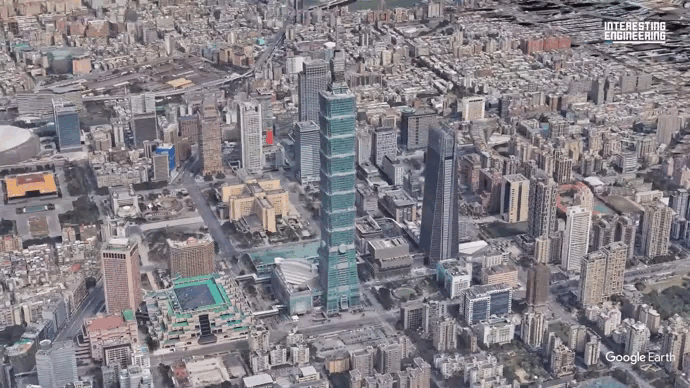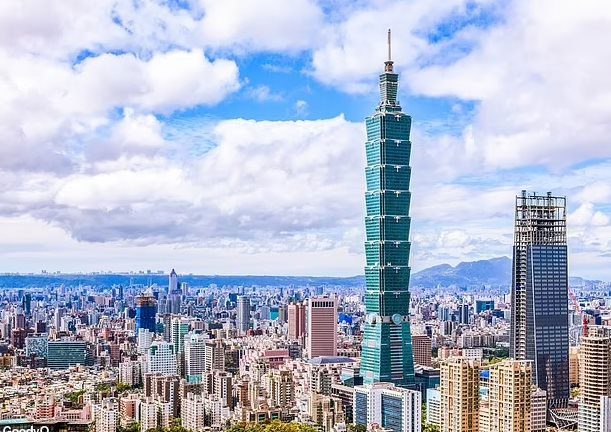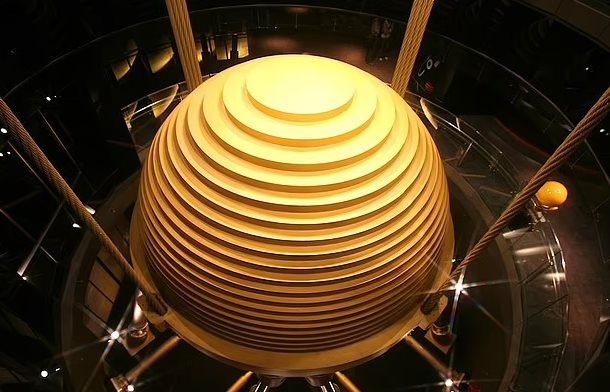Taiwan (China) recently experienced the strongest earthquake in 25 years, yet one building, standing at 500 meters tall, remained steadfastly “unscathed.” How is that possible?

At approximately 7:59 AM on April 3rd, a 7.2 magnitude earthquake shook the entire island of Taiwan, causing many buildings to collapse, resulting in 9 fatalities and over 1,000 injuries as of the morning of April 4th, according to Vietnam time.
The Seismological Center of the Taipei Weather Bureau reported that this earthquake was the strongest tremor in Taiwan in 25 years. However, the earthquake did not affect the tallest building on the island.
Taipei 101 is Taiwan’s tallest building, valued at $1.8 billion, located in the Xinyi District of Taipei. It also held the title of the tallest building in the world from 2004 to 2010.

Taipei 101 Tower.
Standing at approximately 509 meters tall, with 101 floors above ground and 5 floors below, the building is equipped with a prevention mechanism that enhances its structural resilience, reducing overall shaking by 40% during earthquakes and high winds. It can even withstand multiple strong earthquakes.
Specifically, Taipei 101 is outfitted with one of the largest tuned mass damper systems in the world. It features a massive 660-ton steel ball, colored gold, suspended between the 88th and 92nd floors, which acts like a pendulum, gently swaying back and forth to “counteract” forces that cause the building to sway, such as wind pressure.

Taipei 101 is equipped with one of the largest tuned mass damper systems in the world.
The pendulum sways according to the movement of the building; for example, if the building moves in one direction, it will sway in the opposite direction, maintaining overall stability.
If wind or seismic forces push the tower to the right, the ball will exert an equal and opposite force to the left, counteracting the initial motion. Thus, while the building may sway, it will not topple.

If wind or seismic forces push the tower to the right, the ball will exert an equal and opposite force to the left, counteracting the initial motion.
Additionally, it is equipped with a sensor system that detects the building’s movement, an investment totaling $4 million.
The pendulum is an example of a passive damping system, operating without external control or power supply—only relying on gravity and the building’s movement. Taipei 101 is also the first skyscraper in the world to use a pendulum for structural damping.
Construction of Taipei 101 began in 1999 and was completed just in time for New Year’s Eve in 2004. Each floor of the building is also fitted with “bracing” made of steel, extending from the core of the building to the outer columns to increase the structure’s rigidity.

Taipei 101 also features super-fast elevators, with a maximum speed of 60.6 km/h.
The publicizing of its tuned mass damper system has helped make this building a popular tourist destination.
Moreover, the ability to withstand natural forces is not the only impressive feature of Taipei 101. The building also boasts super-fast elevators that can reach a maximum speed of 60.6 km/h, allowing visitors to ascend from the ground floor to the observation deck in just 37 seconds.
Taiwan (China) is a seismically active region due to its location on the Pacific “Ring of Fire,” where tectonic plates collide, frequently causing earthquakes and volcanic activity.
However, according to Stephen Gao, a seismologist and professor at the Missouri University of Science and Technology, Taiwan’s earthquake preparedness is “the most advanced in the world.”


















































